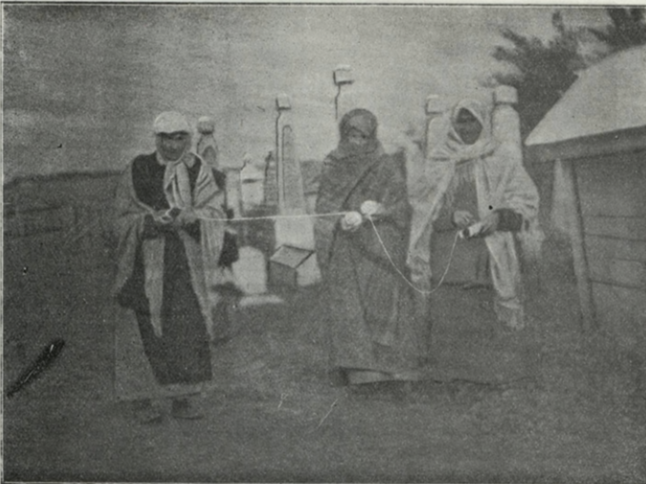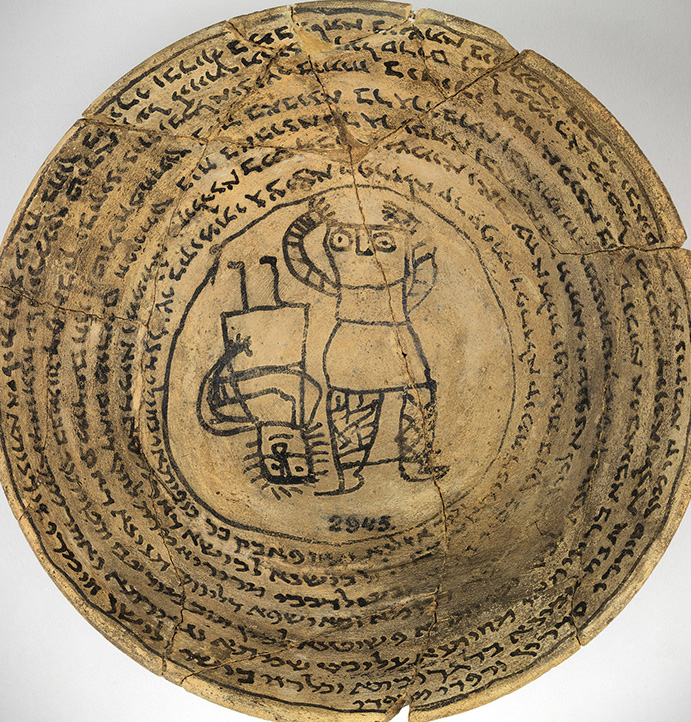וְאָמַר רַבִּי יִצְחָק: אַרְבָּעָה דְּבָרִים מְקָרְעִין גְּזַר דִּינוֹ שֶׁל אָדָם, אֵלּוּ הֵן: צְדָקָה, צְעָקָה, שִׁינּוּי הַשֵּׁם, וְשִׁינּוּי מַעֲשֶׂה.
And Rabbi Yitzḥak said: A person’s sentence is torn up on account of four types of actions. These are: Giving (1) charity, (2) crying out in prayer, (3) a change of one’s name, (4) and a change of one’s deeds for the better.
(2) Tze'akah/Crying Out: Clinging to G-d through prayer by asking for help and admitting you've done wrong. What do you need to admit to yourself or cry out in prayer for?
(3) Shinui Ha'shem/Changing the Name: Changing your identity, whether your literal name, your values, or your thoughts about yourself. How could a small adjustment in the way you see yourself allow you to become the best version of you?
(4) Shinui Ma'aseh/Changing Actions: Changing what you do and what you create. If you were to commit yourself to establishing a new pattern of behavior, what would it be and how could you increase the possibility that it becomes habit?
Adapted from CLAL's The Book of Jewish Sacred Practices
"According to halakhah, women are responsible for obeying all of Judaism’s negative commandments and for observing most of the positive ones, including the Sabbath and the Jewish year’s festivals and holy days. In some instances, however, male and female obligations on these days differ, and female exemption from certain positive precepts cannot be explained solely on the grounds of domestic duties. These exclusions must be seen as conforming to a larger agenda in rabbinic legislation to restrict female participation in public communal activities as much as possible."
Ray Frank (1861-1948), called the "Girl Rabbi of the Golden West," became the first Jewish woman to preach formally from a pulpit in 1890, when she delivered sermons for the High Holy Days in Spokane, WA.
"Ladies and Gentleman, and—considering this is Yom Kippur eve, I know you will permit me to say—friends, brothers and sisters; for surely to-night is one of the most solemn and sacred periods in the lives of Israelites, for to-night, at least, we must be brother and sister in letter and spirit. My position this evening is a novel one. From time immemorial the Jewish woman has remained in the background of history, quite content to let the fathers and brothers be the principals in a picture wherein she shone only by a reflected light. And it is well that it has been so; for while she has let the stronger ones do battle for her throughout centuries of darkness and opposition, she has gathered strength and courage to come forward in an age of progressive enlightenment and do battle for herself if necessary, or prove by being a noble helpmeet how truly she appreciates the love which shielded her past.
I can scarcely tell you how much I feel the honor you have this evening conferred upon me in asking me to address you. For a woman to be at any time asked to give counsel to my people would be a mark of esteem; but on this night of nights, on Yom Kippur eve, to be requested to talk to you, to advise you, to think that perhaps I am to-night the one Jewish woman in the world, mayhap the first since the time of the prophets to be called on to speak to such an audience as I now see before me, is indeed a great honor, an event in my life which I can never forget…
Whatever you do for religion, or whatever you give, must be voluntary and sincere. Coming here because your neighbor does is not religion; neither is it religion to give a certain amount because some one else has done the same. True religion is true repentance for our many sins and mistakes."
- Head of a lamb (now more likely to be a fish) so that G-d may make us the head not the tail
- Fat meats symbolizing prosperity
- Apples in honey for a sweet new year
- Pomegranates - "that our merits be as numerous as their seeds"
- Fish representative of fruitfulness - fertility?
- Using new linens as a good omen for a new start
- Leeks, pumpkins, fennels, and dates, mostly based on their yiddish names being puns
(ח) אָמַר רַבָּן שִׁמְעוֹן בֶּן גַּמְלִיאֵל, לֹא הָיוּ יָמִים טוֹבִים לְיִשְׂרָאֵל כַּחֲמִשָּׁה עָשָׂר בְּאָב וּכְיוֹם הַכִּפּוּרִים, שֶׁבָּהֶן בְּנוֹת יְרוּשָׁלַיִם יוֹצְאוֹת בִּכְלֵי לָבָן שְׁאוּלִין, שֶׁלֹּא לְבַיֵּשׁ אֶת מִי שֶׁאֵין לוֹ. כָּל הַכֵּלִים טְעוּנִין טְבִילָה. וּבְנוֹת יְרוּשָׁלַיִם יוֹצְאוֹת וְחוֹלוֹת בַּכְּרָמִים. וּמֶה הָיוּ אוֹמְרוֹת, בָּחוּר, שָׂא נָא עֵינֶיךָ וּרְאֵה, מָה אַתָּה בוֹרֵר לָךְ.
(8) Rabban Shimon ben Gamliel said: There were no days as joyous for the Jewish people as the fifteenth of Av and as Yom Kippur, as on them the daughters of Jerusalem would go out in white clothes, which each woman borrowed from another. Why were they borrowed? They did this so as not to embarrass one who did not have her own white garments. And the daughters of Jerusalem would go out and dance in the vineyards. And what would they say? Young man, please lift up your eyes and see what you choose for yourself for a wife.
"During the eight days between Rosh Hashanah and Yom Kippur, the thread taken from these measurements was used to make huge soul candles or neshome likht... The candle making was usually led by a female head of household, in the presence of other female family members. Sometimes they were aided by a professional woman kneytlekh-leygerin (wick-layer) or likhtmakherin (candle-maker). The tkhines – Yiddish prayers – for making Yom Kippur candles call on God to remember the merits of Jewish ancestors, and have mercy on the living. After naming their biblical ancestors, women making soul candles would fold a piece of wick for each of their more recent ancestors, naming their merits in the same way... In some places, it was customary to make two separate candles – one for the living – the gezunte (healthy) or lebedike (living) likht – and one for the dead – the neshome likht. The wick for the living candle was taken either from a second cemetery measurement, or from a thread used to measure all living members of the family. On the eve of Yom Kippur, the candle for the living was lit in the home, and the soul candle in the shul."

Cemetery Measuring and Soul Candle Making: https://ritualwell.org/blog/cemetery-grave-measuring-and-soul-candle-making-a-ritual-guide/
Yom Kippur Soul Candle Making: https://ritualwell.org/blog/yom-kippur-cemetery-grave-measuring-and-soul-candle-making-a-ritual-guide/
Raboyne shel oylem, azoy vi mir beyde hobn getsoygn dem fodem mit undzer gantsn koyekh, un der fodem iz nisht ibergerisn gevorn, azoy zoln botl vern ale beyze koykhes. Undzere lebns zoln kholile nisht ibergerisn vern.
Master of the universe, since we both pulled the thread with all our power, and the thread was not broken, shall all evil powers come to naught. Our lives shall not – God forbid – be cut short.
A song for cemetery measuring from Pruzhany, Poland, recorded by A. Fayvushinsky. Tune unknown.
Kh’hob a mame, Tseytele
Far ir neshome, a kneytele
Dreyt men dos fedeml shtark
Lang, lang
I have a mama, Tseytele,
For her soul – a kneytele (candle wick)
The thread is spun, strong
long, long.
"Men have traditionally observed the conclusion and renewal of the annual synagogue cycle of Torah readings with festive celebration, particularly circular processions (hakafot) around the synagogue, and joyous dancing, with the Torah scrolls. In recent years many women have initiated separate women’s hakafot with the Torah scrolls on Simhat Torah. There is no halakhic objection to this practice since a woman, like a man, is permitted to touch and hold the Torah scroll at all times (Yoreh De’ah 282:9). Some contemporary Orthodox authorities, however, oppose this innovation because they link it with their perceptions of feminism as a threat to traditional Jewish life."




